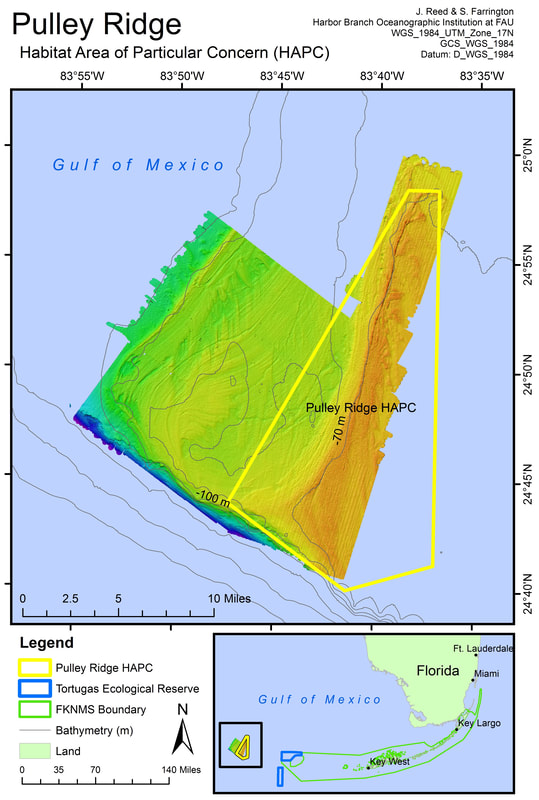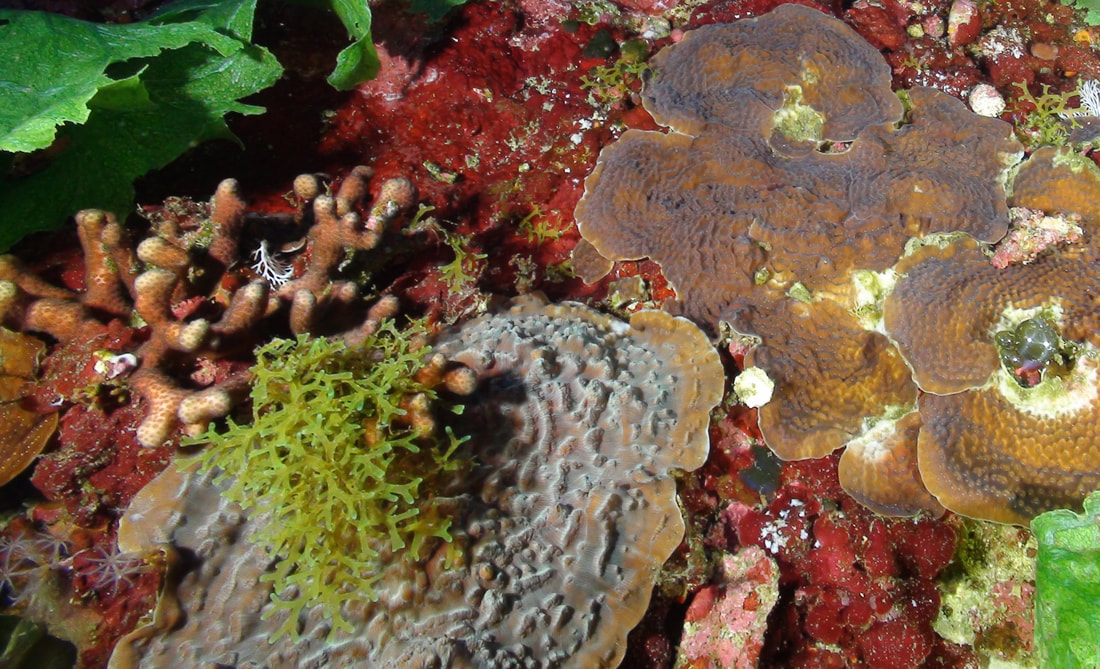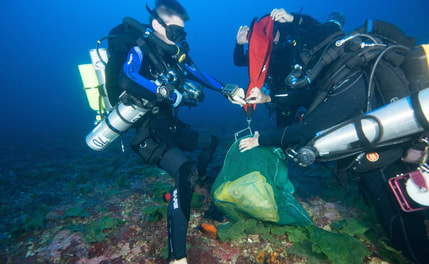Coral Ecosystem Connectivity: from Pulley Ridge to the Florida Keys and Southeast Florida Coral Ecosystem Conservation Area
|
Pulley Ridge is the deepest known mesophotic reef in U.S. territories, found on the West Florida continental shelf at a depth of 60–90 m. Formed as a drowned barrier reef, Pulley Ridge is ~150 km from the Dry Tortugas and ~225 km from the Florida Reef Tract. Coral cover on the main ridge is relatively low (~1 %), but light-dependent communities of corals, sponges, and macroalgae form critical habitats for invertebrate and fish species. The objective of the initial five-year project was to determine the level of connectivity between important coral, fish, sponge, and algal species at Pulley Ridge to those at nearby reefs. A particular emphasis was on comparing Pulley Ridge populations to those in existing management infrastructure including the Dry Tortugas National Park, Florida Keys National Marine Sanctuary, and Flower Garden Banks National Marine Sanctuary. Our lab's contribution to the project focused on the connectivity of Pulley Ridge coral populations to other mesophotic reefs in the Gulf of Mexico (GOM).
The Pulley Ridge project represented a massive collaborative effort of over 35 main scientists between NOAA’s Cooperative Institute for Marine and Atmospheric Studies (CIMAS) at the University of Miami and Cooperative Institute for Ocean Exploration, Research, and Technology (CIOERT) at Florida Atlantic University. The project was funded by NOAA’s National Centers for Coastal Ocean Science and Office of Ocean Exploration and Research in partnership with NOAA’s Office of National Marine Sanctuaries, National Marine Fisheries Service’s Southeast Regional Office, and Gulf of Mexico Regional Collaboration Team. |
|
Assessment of Coral Connectivity through Population Genetics, Morphometrics, Algal Symbiosis, and Gene Expression
Using single nucleotide polymorphisms and (earlier) microsatellite markers from the dominant coral species Montastraea cavernosa, we've determined how coral populations across the GOM interact with one another. Genetic tests identified Pulley Ridge as an isolated population, including from the near Dry Tortugas. Estimated population size for this species also coincided with survey data, indicating that Pulley Ridge is likely much smaller than other populations in the GOM. More recent assessments of Southeast Florida coral populations demonstrate distinct populations between the Southeast FL Coral ECA and those in the majority of the Florida Keys.
How do shallow and mesophotic corals adapt to their different environments? Light limitation at mesophotic depths results in morphological, physiological, and symbiotic shifts and may influence population dynamics across depth ranges and broad spatial scales. Mesophotic corals in the SE GOM demonstrate photoadaptive strategies relative to their shallow counterparts, including smaller skeletal structures and increased symbiont densities. More detailed assessment of corals' responses to changing environments can be accomplished through differential gene expression studies. Using a tag-based RNA-Seq pipeline, we have sequenced Montastraea cavernosa transcriptomes from sites throughout the GOM, including Belize, Flower Garden Banks, Pulley Ridge, and Dry Tortugas.
How do shallow and mesophotic corals adapt to their different environments? Light limitation at mesophotic depths results in morphological, physiological, and symbiotic shifts and may influence population dynamics across depth ranges and broad spatial scales. Mesophotic corals in the SE GOM demonstrate photoadaptive strategies relative to their shallow counterparts, including smaller skeletal structures and increased symbiont densities. More detailed assessment of corals' responses to changing environments can be accomplished through differential gene expression studies. Using a tag-based RNA-Seq pipeline, we have sequenced Montastraea cavernosa transcriptomes from sites throughout the GOM, including Belize, Flower Garden Banks, Pulley Ridge, and Dry Tortugas.



